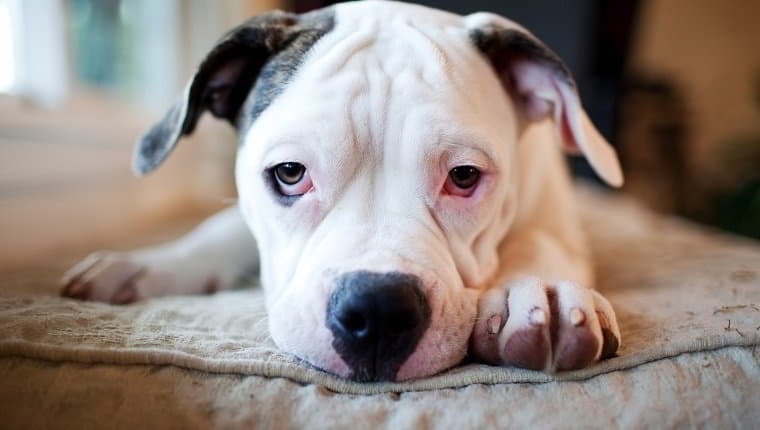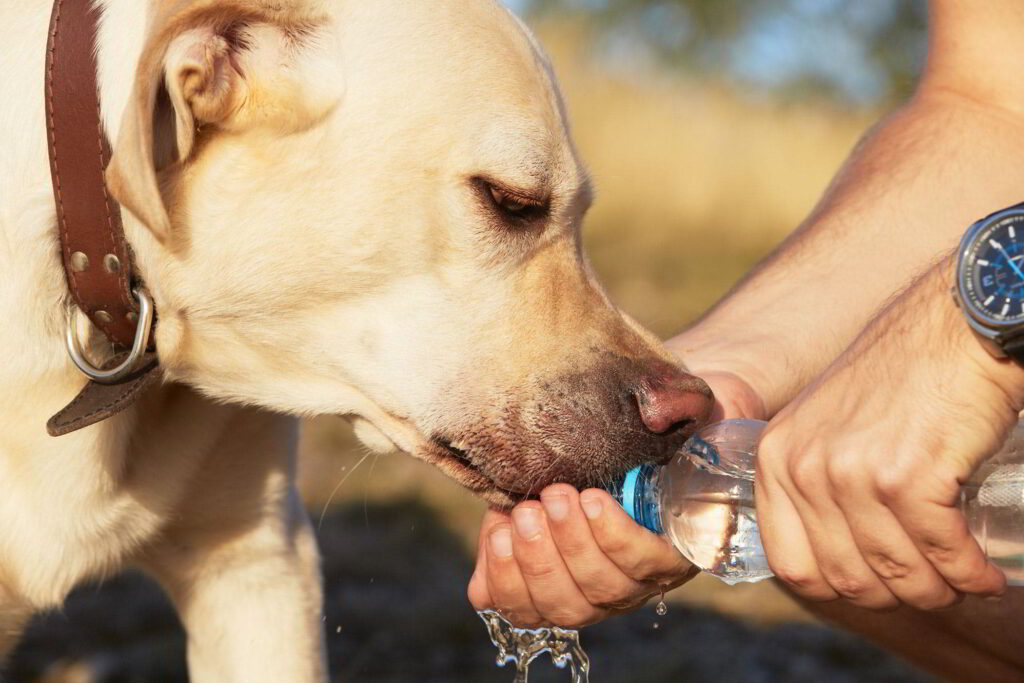Low blood sugar can affect puppies much more often than adult dogs, even when a puppy is healthy. The technical term for low blood sugar is hypoglycemia and it happens most often with adult pets that suffer from unregulated or poorly regulated diabetes, but can happen to puppies in certain situations.
Definition
Hypoglycemia refers to the condition when there is not enough sugar in the bloodstream. Puppies can develop low blood sugar due to intestinal parasites that compromise digestion, or because of a lack of caloric reserves. Without enough sugar, the puppy’s heartbeat rate and breathing slower down, triggering a cascade effect of other symptoms. Fat is body fuel, and when there’s not enough, the blood sugar levels fall. Adult pets can make up this difference due to their larger fat stores and fully functional liver that help produce energy when blood sugar levels is low. However, immature livers can’t manufacture enough necessary sugar and as a result, these tiny pups develop hypoglycemia.

Symptoms
The signs of low blood sugar can be vague. It’s important to watch out for them especially if your puppy is a tiny breed that’s most susceptible.
Very small puppies, especially toy breeds like the Chihuahua or Pomeranian, can be so small they have very few fat stores.
Be alert for any one or a combination of the following atypical behaviors and symptoms.
- Weakness
- Becoming very sleepy
- Disorientation
- A wobbly “drunk” gait
- “Glassy” and unfocused eyes
- Twitching, shaking, trembling, or shivering
- Head tilted to one side
- Seizures
- Unconsciousness
Without prompt attention and first aid, your puppy could die. Fortunately, when you recognize the signs early in the process, low blood sugar is easy to reverse at home.

Response
In almost all cases, the puppy will respond very quickly to treatment, within five or 10 minutes. However, if treatment doesn’t reverse the symptoms within this time frame, take your puppy to the veterinarian immediately as something else could have caused the signs.
Even when your dog responds quickly it’s a good idea to have the vet check it sometime that day to be sure everything is as it should be and determine the cause in order to prevent it again in the future.
Treatment
When you catch the symptoms early and seek treatment immediately, most puppies are fine. Without prompt help, young puppies can fall into a coma and their breathing or heartbeat may stop.

All Symptoms
When the blood sugar drops, puppies can’t regulate their body temperature. It’s important to keep the dog warm until the glucose level rises enough to burn for energy. Wrap your pup in a blanket. It should be able to lap it up from the spoon. Often, you’ll notice the wooziness when it’s been a while since the puppy’s last meal. So as soon as you observe puppy woozy behavior, offer it something to eat. Make it something smelly and yummy that you know he’ll eagerly snarf up, such as a tablespoon or two of canned food.
“Drunk” Behavior
A highly concentrated sugar source like Karo syrup, pancake syrup or honey can work. Just be sure your puppy is still able to swallow end up beingfore giving about a teaspoonful of the sugars source. If the dog is very groggy, offer a bit of water first. You can use a syringe if the dog doesn’t lap up the sugar water. Check to be sure the dog swallows, and then offer the syrup.
Sleepy Behavior
Getting sugar into the puppy will counteract all these symptoms. You can even rub the glucose syrup on the puppy’s gums.
Seizures
Once the seizure has finished, or when the puppy has fallen unconscious, you can still administer a sugar source; rub the sugar syrup on the inside of the dog’s lips and gums, and watch the puppy very closely. If your pup is having seizures, you should immediately take him to the vet.
Prevention
When your puppy has suffered from a bout of hypoglycemia, you’ll know to be alert for the signs of low blood sugar in the future. You can also take steps to prevent the problem, especially if your pup is a high-risk pet.
- Add two tablespoons of Karo syrup to your puppy’s water for all-day sipping. Be sure to dump it out and add fresh each day or the sugar water could grow bacteria.
- Schedule several meals every day. Young puppies have trouble eating enough food in one sitting. A small meal several times a day helps keep the blood sugar normalized.
- Put dry food out all the time, in a puzzle toy ball, for intermittent snacking. You can measure this amount, too, and regulate how much the puppy gets. This will help prevent puppy obesity while providing healthy blood sugar levels.
Most adult dogs won’t have problems with hypoglycemia. However, playing and running too hard without rest can cause low blood sugar even in adults that are not toy breeds. It’s up to pet owners to stay watchful and make sure the pet eats right and maintains healthy food habits.
